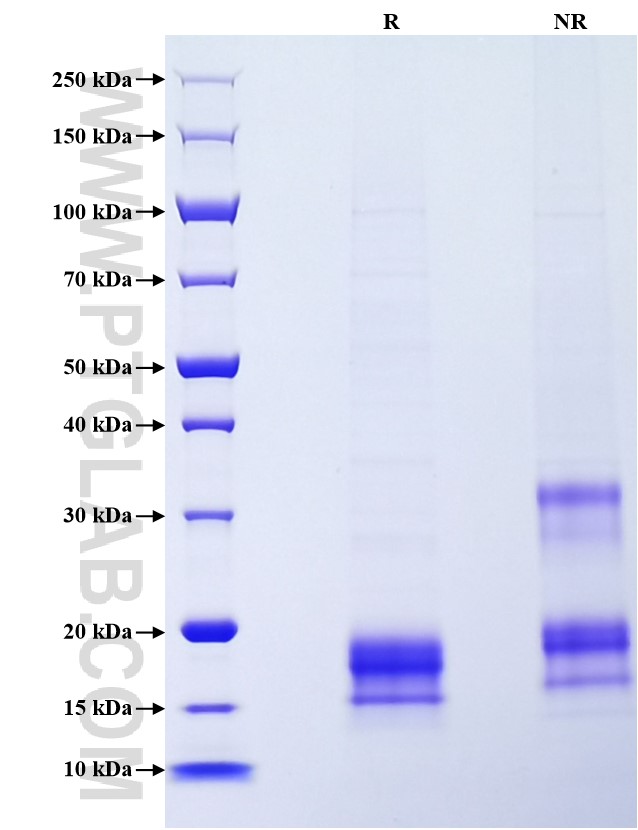Recombinant Human CCL17/TARC protein (His Tag)
种属
Human
纯度
>90 %, SDS-PAGE
标签
His Tag
生物活性
未测试
验证数据展示
产品信息
| 纯度 | >90 %, SDS-PAGE |
| 内毒素 | <0.1 EU/μg protein, LAL method |
| 生物活性 | Not tested |
| 来源 | HEK293-derived Human CCL17 protein Ala24-Ser94 (Accession# Q92583) with a His tag at the C-terminus. |
| 基因ID | 6361 |
| 蛋白编号 | Q92583 |
| 预测分子量 | 11.9 kDa |
| SDS-PAGE | 15-19 kDa, reducing (R) conditions |
| 组分 | Lyophilized from 0.22 μm filtered solution in PBS, pH 7.4. Normally 5% trehalose and 5% mannitol are added as protectants before lyophilization. |
| 复溶 | Briefly centrifuge the tube before opening. Reconstitute at 0.1-0.5 mg/mL in sterile water. |
| 储存条件 |
It is recommended that the protein be aliquoted for optimal storage. Avoid repeated freeze-thaw cycles.
|
| 运输条件 | The product is shipped at ambient temperature. Upon receipt, store it immediately at the recommended temperature. |
背景信息
CCL17, also named as TARC, is a member of the CC chemokine family, and is highly expressed by thymus and other cells, including keratinocytes, endothelial cells, dendritic cells, bronchial epithelial cells and fibroblasts. CCL17 plays important roles in T cell development in thymus as well as in trafficking and activation of mature T cells. CCL17 induced chemotaxis and Ca2+ influx in the cells stably expressing CCR4, thereby demonstrating the ligand-receptor relationship between CCL17 and CCR4.
参考文献:
1. Imai T. et al. (1996) J Biol Chem. 271:21514-1. 2. Sallusto F. et al. (1998) Eur J Immunol. 28:2760-9. 3. Campbell JJ. et al. (1999) Nature. 400:776-80. 4. Vestergaard C.et al. (1999) J Clin Invest. 104:1097-105. 5. Sekiya T.et al. (2000) J Immunol.165:2205-13. 6. Yu B.et al. (2000) J Dermatol Sci.30:29-36.
